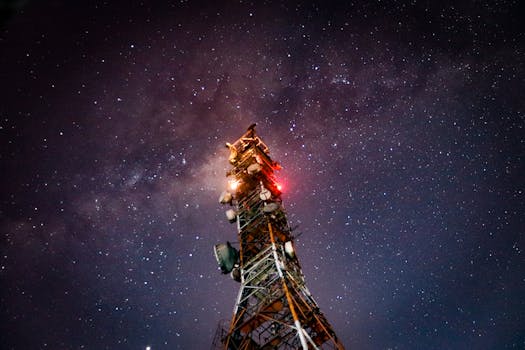
Starlink: Revolutionizing Global Internet Connectivity with Satellite Technology
Starlink is a satellite constellation developed by SpaceX, aiming to provide high-speed, low-latency internet connectivity worldwide, bridging the digital divide and transforming the way we communicate. With its cutting-edge technology and ambitious goals, Starlink is poised to revolutionize the telecommunications industry and make a significant impact on the global economy.
Introduction to Starlink
Starlink is a constellation of low-Earth orbit (LEO) satellites, designed to provide broadband internet services to underserved and unserved communities around the world. The project was announced in 2015 by Elon Musk, the CEO of SpaceX, and has been under development since then. The goal of Starlink is to create a network of thousands of satellites that can provide fast, reliable, and affordable internet connectivity to anyone, anywhere in the world.
The Starlink constellation will consist of over 40,000 satellites, each weighing around 260 kilograms, and will be launched into orbit using SpaceX’s Falcon 9 rocket. The satellites will be placed in a low-Earth orbit, at an altitude of around 550 kilometers, which will allow them to provide internet services with latency as low as 20 milliseconds.
How Starlink Works
Starlink uses a complex system of satellites, ground stations, and user terminals to provide internet services. The satellites in the constellation communicate with each other and with ground stations on Earth, using a combination of radio waves and laser beams. The ground stations, also known as gateways, are responsible for connecting the Starlink network to the global internet.
Users can access the Starlink network using a small, portable terminal, which is approximately the size of a laptop. The terminal uses advanced phased array technology to communicate with the satellites, and can provide speeds of up to 1 Gbps (gigabit per second). The terminal is also equipped with a built-in router, which allows users to connect multiple devices to the internet.
One of the key features of Starlink is its ability to provide internet services in areas where traditional connectivity is not available. This includes remote and rural areas, as well as areas affected by natural disasters or conflict. Starlink can also provide backup connectivity for critical infrastructure, such as hospitals and emergency services.
Benefits and Applications of Starlink
Starlink has the potential to revolutionize the way we communicate and access information. Some of the benefits and applications of Starlink include:
Global connectivity: Starlink can provide internet services to anyone, anywhere in the world, bridging the digital divide and connecting underserved communities.
Remote work: Starlink can enable remote work and virtual collaboration, allowing people to work from anywhere and connecting them with global opportunities.
Education and research: Starlink can provide access to educational resources and research opportunities, bridging the gap between urban and rural areas and promoting socio-economic development.
Emergency response: Starlink can provide critical connectivity during emergencies, such as natural disasters or conflict, and support humanitarian efforts.
IoT and smart cities: Starlink can enable the growth of IoT (Internet of Things) and smart cities, by providing low-latency and high-speed connectivity for devices and sensors.
Challenges and Future Developments
While Starlink has the potential to revolutionize global internet connectivity, it also faces several challenges and uncertainties. Some of the challenges include:
Regulatory frameworks: Starlink needs to comply with regulatory frameworks in different countries, which can be complex and time-consuming.
Interference and congestion: The increasing number of satellites in orbit can cause interference and congestion, affecting the performance of Starlink and other satellite systems.
Cost and affordability: The cost of launching and maintaining a constellation of thousands of satellites is extremely high, and the affordability of Starlink services is still uncertain.
Space debris: The launch of thousands of satellites can contribute to the growing problem of space debris, which can pose a risk to other satellites and spacecraft.
Despite these challenges, SpaceX is committed to developing and improving Starlink, and has announced several future developments, including the launch of new satellites, the development of new user terminals, and the expansion of its ground station network.

